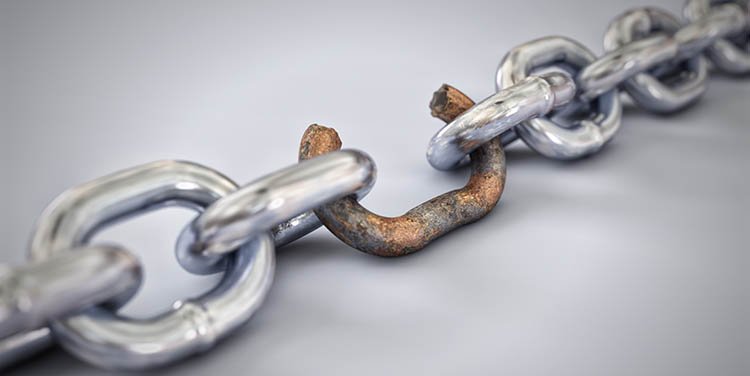What exactly is a “Google manual action”? It’s a penalty placed on your website by Google often for being “too spammy”, it isn’t related to any sort of algorithm or update. It is Google basically penalizing your website (typically through the removal of SERP listings) for not following their quality guidelines. So how do you know if you’ve been penalized? Aside from a drop of nearly no rankings or traffic, you’ll be notified in your Google Search Console with a message from Google letting you know which type of manual action you’ve received if it is a whole or partial site penalty, and why.
Common causes for a manual penalty:
- Unnatural links to or from your website
- Hacked website
- Cloaking or seemingly sneaky redirects
- Hidden text (think white text on a white background)
- Keyword stuffing
- Spammy/stuffed structured markup
- Spam free hosts
- Thin content with no added value
- Spam – intentional or user-generated, pure spam (of course)
Who decides what’s spam?
The Google algorithm and the Google (human) reviewer staff decides the spam quality. Most of the spam issues can be recognized and flagged with Googles automated algorithm, but sometimes review is also done through a human, manual review process; you can be assured if a penalty is given it is warranted. The assessment is made using the very visible and accessible Google Quality Guidelines, as stated by Google within the Search Console Help articles “Flagged sites can be demoted or even removed entirely from Google search results”. Receiving a penalty is not the end-all, they can be revoked! Once any flagged issues have been fixed you can submit your site for reconsideration. However, repeat offenders of Googles’ Quality Guidelines will attract additional attention and therefore more scrutiny and possibly more penalties.
How do I remove a manual action?

First, don’t ignore a manual penalty! Ignoring it will not make it go away, it will simply lose your business as your site will no longer rank and your traffic will drop. Instead, heed Google’s advice. If it’s just a few pages (a partial penalty) then it should be an easy fix. If you have a whole site penalty, you should probably reconsider your SEO strategy and fix the issues Google has provided. Manual actions occur when Google detects a blatant attempt to manipulate the search engine, be wary of “old school” or “black hat SEO” tips. Googles algorithms are constantly changing and the engine is getting smarter than ever – attempts to game the system will only put you at a disadvantage and as noted, possibly remove you from the SERPs altogether.
Instead, become familiar with the Google Quality Guidelines, clean up any issues noted – some could take specialized help such as a hacking or link driven action, others like content are an easy fix to do yourself.

Unnatural links to or from your website – black hat SEO techniques sometimes include “buying links” to manipulate page rank, this is a violation of Google Webmaster Guidelines. To resolve this issue you’ll want to disavow the toxic or unnatural links. To do so, first, start by download your link profile from Google Search Console, find the links that violate the guidelines and try contacting the webmaster to have them remove the link or place a “rel=nofollow” attribute on the link. For any links, you were unable to remove through direct request (which will be a long process), use Google’s Disavow tool. Finally, submit your request to have the manual action removed.
Hacked website – resolving a manual action for a hacked website is a bit more difficult from the rest, the reason being – something happened to your site that YOU didn’t do. You’ll need to notify your host that your website has been compromised, so they can make sure their other customers won’t’ be or haven’t been affected. Your host may be able to help you recover your site. If the hack is more serious you’ll want to consider taking your site “off-line”, during this time you’ll want to check for any “new” logins you didn’t create and change passwords. If it’s something you can’t or doesn’t feel comfortable resolving, it’s best to bring in a specialized, technical, security team to help resolve your hacked website. Once the hack has been resolved, and the website health restored, bring your site back online and submit a request for the manual action to be removed.
Cloaking or seemingly sneaky redirects – according to Google this manual action means “your site may be showing different pages to users than are shown to Google, or redirecting users to a different page than Google saw.” To resolve this issue you’ll want to run a “fetch as Google” in Search Console and compare the fetch to your live website. If there is a content discrepancy you’ll want to remove it. If the URLs are taking users places they shouldn’t or wouldn’t expect to – remove the redirect(s). You may also want to look for conditional redirects within the code – this will tell your site “if coming from Google show X if coming from somewhere else show Y” – these conditional redirects typically reside within JavaScript or your .htaccess file or third-party plugins. Of course, once you’re sure all errors have been resolved, resubmit your site for review.
Hidden text and keyword stuffing – this one is pretty self-explanatory; if content exists on a page that is “invisible” to the naked eye remove it or fix it. Remove strings of repeat words or word combinations that don’t make sense within the context of the page. Resubmit for review once complete.
Spammy/stuffed structured markup – this manual action is due to a violation of the Rich Snippets Guidelines you’ll receive it for “marking up content that is invisible to users, marking up irrelevant or misleading content, or other manipulative behavior.” (Search Console Help articles). Update or remove snippets to comply with these guidelines and resubmit for action removal.

Spam – intentional or user-generated, pure spam (of course) – if your site allows comments, social posts, or any other “user-generated” post, review it to ensure it doesn’t contain spam. Review the content of your site to ensure you don’t use “aggressive spam techniques such as automatically-generated gibberish, cloaking, scraping content from other websites, and/or other repeated or egregious violations of Google’s quality guidelines.”. This one seems pretty easy too – if your content sounds like spam and like something YOU wouldn’t click on, then it probably needs revision.
It all comes down to being proactive. We should work to continually improve our website and ranking. Be vigilant in checking your Search Console – and if a manual action does occur it is not the end of the world. Follow Google’s guidelines to resolve the issue and submit your site for reconsideration. Your reconsideration message should be brief and concise. Explain what you did to resolve the issue and what you couldn’t, that you plan to follow all Google guidelines in the future, and wait for their response. It shouldn’t take more than a few days to a few weeks. And if you don’t succeed the first time, Google doesn’t hold grudges. Put the work in a try the fix again. Your business cannot exist in today’s tech world without a website. So ensure you’re following best practices and continue to stay up on algorithm changes and SEO.

Allan Todd is CEO of Pagecafe Digital Marketing. In 2022, Allan teamed up with Infront Webworks to provide digital marketing, website design, content marketing, SEO and strategy and solutions to local businesses. Allan lives in Colorado Springs.


